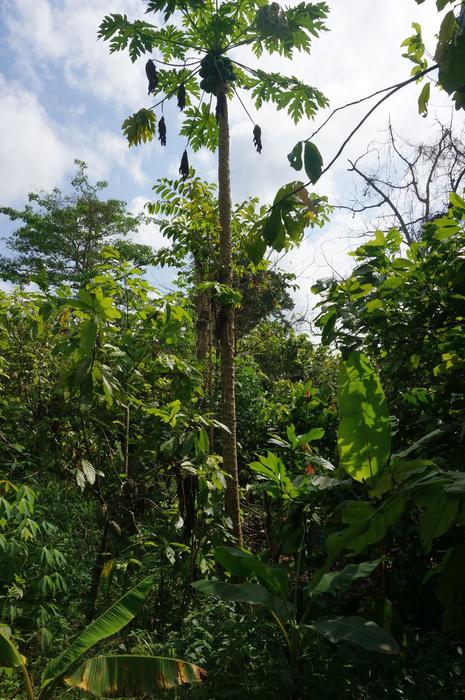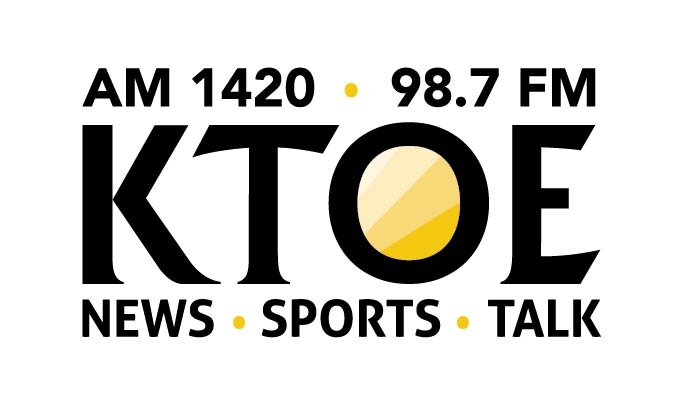“Just Transition”: Polluting Countries Must Take Responsibility for Extreme Climate Change – Democracy Now!

Report on Climate Negotiations at the U.N. Summit in Belém
Context and Alignment with Global Goals
The United Nations climate summit in Belém is taking place against a complex global backdrop, influencing negotiations and the pursuit of the Sustainable Development Goals (SDGs). Key contextual factors include:
- Threats to the international rules-based system, which undermines multilateral efforts crucial for SDG 17 (Partnerships for the Goals).
- The rise of authoritarianism and climate denialism, which directly challenges the global consensus required for SDG 13 (Climate Action).
- A recent advisory opinion from the International Court of Justice (ICJ) affirming the legal and moral obligation of nations to act on climate change, reinforcing the principles of SDG 16 (Peace, Justice and Strong Institutions) and the “polluter pays” principle.
Core Negotiation Themes and SDG Imperatives
Discussions at the summit are centered on several critical themes, each deeply interconnected with the 2030 Agenda for Sustainable Development.
-
Fairness and Equity
A central issue is ensuring that climate action does not exacerbate existing disparities. This aligns directly with SDG 10 (Reduced Inequalities).
- Negotiations are focused on the disproportionate impacts of climate change on vulnerable communities in developing nations.
- There is significant concern that developed countries, including the United States, are not fulfilling their “fair share” of emissions reductions and financial contributions, hindering global progress.
-
Climate Finance
The provision of adequate and transparent finance is a cornerstone of the negotiations, essential for enabling developing countries to achieve SDG 7 (Affordable and Clean Energy) and SDG 13 (Climate Action).
- A major obstacle is the gap between financial promises and actual delivery, with reports of double-counting and non-transparent accounting by developed nations.
- Parallel discussions at a U.N. tax convention in Nairobi are highlighted as a potential mechanism to unlock hundreds of billions in necessary funding, yet face opposition from the same countries blocking climate finance.
- Brazil has proposed a “Fab Four” provision for finance to enhance transparency and close the ambition gap, supporting the accountability frameworks of SDG 17.
Key Action Areas for Sustainable Development
The summit aims to produce concrete roadmaps on several key issues to accelerate the implementation of the Paris Agreement and the SDGs.
-
Global Goal on Adaptation (GGA)
Developing a robust framework for adaptation is critical for protecting communities from the impacts of climate change, such as extreme weather and ecosystem collapse, which threaten progress on SDG 1 (No Poverty), SDG 2 (Zero Hunger), and SDG 11 (Sustainable Cities and Communities).
- While thousands of potential indicators have been narrowed down, developing countries insist that these metrics will be meaningless without a clear roadmap for implementation and the financial means to execute them.
-
Just Transition Work Programme
This initiative seeks to ensure the global shift away from fossil fuels is equitable and creates opportunities for all. It is fundamental to achieving SDG 8 (Decent Work and Economic Growth) and SDG 10 (Reduced Inequalities).
- There is a strong demand from civil society and the G77 group of developing countries for a “Belém action mechanism” to create a concrete, coordinated plan that ensures workers and communities can live with dignity through this economic transformation.
-
Fossil Fuel Transition
Addressing fossil fuel dependency is central to achieving climate targets. This requires a systemic approach that recognizes the economic realities of many nations.
- Countries like Colombia are proposing roadmaps for a managed phase-out, but emphasize that such plans require international financial support and technology transfer, as outlined in SDG 17.
- The issue is linked to sovereign debt, as many developing countries are forced to continue fossil fuel exploitation to service loans, creating a cycle that undermines both SDG 8 and SDG 13.
Analysis of Sustainable Development Goals in the Article
1. Which SDGs are addressed or connected to the issues highlighted in the article?
-
SDG 13: Climate Action
- The entire article is centered on the U.N. climate summit (COP30), discussing negotiations on mitigation, adaptation, climate finance, and the goal of limiting warming to 1.5 degrees. It directly addresses the need for urgent action to combat climate change and its impacts.
-
SDG 17: Partnerships for the Goals
- The article emphasizes the importance of multilateralism, international cooperation, and global partnerships. It highlights negotiations between rich developed countries and developing countries (G77) on finance, technology, and transparency, which are central to SDG 17. The discussion on the U.N. tax convention and mobilizing finance from developed countries is a key aspect of this goal.
-
SDG 10: Reduced Inequalities
- The theme of fairness and equity is repeatedly mentioned. The article discusses how developed countries are not doing their “fair share” and the disproportionate impacts of climate change on developing nations. It also points out how debt cycles trap developing countries, exacerbating inequality.
-
SDG 8: Decent Work and Economic Growth
- The concept of a “just transition” is a major focus, with the article stressing the need for a plan that “works for people, communities, countries and workers” and allows everyone to “live with dignity.” This directly relates to creating sustainable economic models and ensuring decent work during the shift away from fossil fuels.
-
SDG 7: Affordable and Clean Energy
- The discussion on phasing out fossil fuels is a core component. The article mentions countries like Colombia having a “road map” to “move away from fossil fuels,” which inherently involves a transition to cleaner and more sustainable energy sources.
-
SDG 16: Peace, Justice and Strong Institutions
- The article references the International Court of Justice (ICJ) and its ruling on the “legal and a moral obligation for countries to act.” It also mentions the threat to the “rules-based system” and the importance of multilateral institutions like the U.N. in addressing global challenges.
-
SDG 5: Gender Equality
- Although mentioned briefly, the article includes “gender” as one of the key issues where progress is needed in the negotiations, linking the climate crisis to gender equality.
2. What specific targets under those SDGs can be identified based on the article’s content?
-
Target 13.1: Strengthen resilience and adaptive capacity to climate-related hazards and natural disasters
- This is addressed through the discussion on the “global goal on adaptation” and the need to adapt to “extreme weather, inequality, ecosystems collapsing.” The article highlights this as a “critical issue for developing countries.”
-
Target 13.a: Implement the commitment undertaken by developed-country parties to the UNFCCC to a goal of mobilizing jointly financial resources for developing countries
- This is a central theme. The article extensively discusses the “critical question of finance,” the failure of “rich developed countries” to deliver on their promises, and the need for transparency to avoid “double counting” of financial contributions.
-
Target 17.3: Mobilize additional financial resources for developing countries from multiple sources
- The article discusses the need for finance beyond just government commitments, mentioning promises on “private finance” and the debate around a “U.N. tax convention” that could provide “hundreds of billions” in funding.
-
Target 8.2: Achieve higher levels of economic productivity through diversification, technological upgrading and innovation
- This is linked to the just transition and the need for a plan for “diversification for lots of countries who are relying on fossil fuels.” This implies a shift to new, sustainable industries.
-
Target 7.2: By 2030, increase substantially the share of renewable energy in the global energy mix
- The call to “move away from fossil fuels” directly implies this target. The article mentions countries developing road maps for this transition, which would necessitate a significant increase in renewable energy.
-
Target 16.8: Broaden and strengthen the participation of developing countries in the institutions of global governance
- The article highlights the demands of developing countries, referred to as “the G77,” in pushing for mechanisms like the “Belém action mechanism” and a road map on adaptation, showing their active participation in shaping global climate policy.
3. Are there any indicators mentioned or implied in the article that can be used to measure progress towards the identified targets?
-
Indicators for the Global Goal on Adaptation
- The article explicitly mentions the development of indicators to measure adaptation progress. It states, “We had 5,000 indicators. They got down to a thousand indicators. We’re now down to a hundred indicators.” This is a direct reference to a measurement framework for Target 13.1.
-
Amount of Climate Finance Provided and Mobilized
- This is an implied indicator. The article’s focus on the need for “transparency on finance” and the criticism that current reporting involves “a lot of double counting” underscores the importance of accurately measuring the volume of financial flows from developed to developing countries (relevant to Target 13.a).
-
The Global Stocktake
- The article identifies the “global stocktake” as one of the “seven key issues.” This process is an indicator mechanism in itself, designed to measure collective progress towards meeting the Paris Agreement’s goals, specifically the 1.5-degree ambition.
-
National Plans and Road Maps
- The mention of Colombia having a “road map” to move away from fossil fuels and the call for a “concrete plan” like the “Belém action mechanism” for a just transition imply that the existence and implementation of such national and international plans serve as indicators of progress.
SDGs, Targets and Indicators Summary
| SDGs | Targets | Indicators |
|---|---|---|
| SDG 13: Climate Action |
13.1: Strengthen resilience and adaptive capacity.
13.a: Mobilize financial resources for developing countries. |
– A set of 100 indicators being developed for the Global Goal on Adaptation.
– The Global Stocktake process to measure progress against the 1.5°C goal. – Transparent reporting on the amount of climate finance provided by developed countries. |
| SDG 17: Partnerships for the Goals | 17.3: Mobilize additional financial resources for developing countries. | – Mobilization of funds through mechanisms like a potential U.N. tax convention. |
| SDG 8: Decent Work and Economic Growth | 8.2: Achieve economic productivity through diversification. |
– Development of concrete plans and mechanisms (e.g., “Belém action mechanism”) for a just transition.
– National road maps for economic diversification away from fossil fuels. |
| SDG 7: Affordable and Clean Energy | 7.2: Increase the share of renewable energy. | – Implementation of national road maps to “move away from fossil fuels.” |
| SDG 10: Reduced Inequalities | Adherence to principles of equity and “fair share” in climate action. | – Level of financial and technological support provided by developed countries based on the “polluter pays” principle. |
| SDG 16: Peace, Justice and Strong Institutions | 16.8: Broaden the participation of developing countries in global governance. | – Adoption of proposals and mechanisms put forth by developing country groups like the G77. |
Source: democracynow.org
What is Your Reaction?
 Like
0
Like
0
 Dislike
0
Dislike
0
 Love
0
Love
0
 Funny
0
Funny
0
 Angry
0
Angry
0
 Sad
0
Sad
0
 Wow
0
Wow
0
















































:focal(1500,1000)/https://media.globalcitizen.org/a6/9a/a69a4720-d8a1-4715-b596-18738d03c05c/rotary_polio_hero_image.jpg?#)







/countries/sri-lanka/photo-credit---dmc-sri-lanka.tmb-1200v.jpg?sfvrsn=dc298bcc_1#)


















